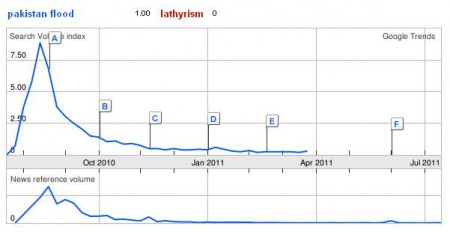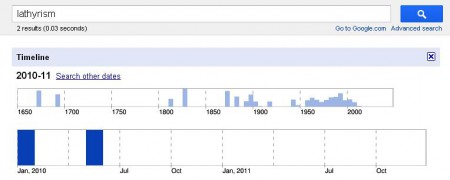- The impact of distance and a shifting temperature gradient on genetic connectivity across a heterogeneous landscape. Climate change bringing formerly genetically isolated populations together, possibly increasing adaptive potential.
- Intra-varietal genetic diversity of the grapevine (Vitis vinifera L.) cultivar ‘Nero d’Avola’ as revealed by microsatellite markers. 15 distinct genetic group among 118 plants from 30 Sicilian vineyards seems quite a lot.
- Emerging cultivation of oregano in Sicily: Sensory evaluation of plants and chemical composition of essential oils. More from Sicily. Wild is best.
- Effect of vineyard-scale climate variability on Pinot noir phenolic composition. Its complicated. But at least Pinot noir is not like Nero d’Avola. Or is it? Oh, crap.
- Landraces in Inland areas of the Basilicata region, Italy: monitoring and perspectives for on farm conservation. “Farmer-maintainers” of landraces tend to be old and isolated. Interesting stratified sampling strategy. Basilicata? They grow horseradish there, don’t they? They do indeed.
- Critical distances: Comparing measures of spatial accessibility in the riverine landscapes of Peruvian Amazonia. GIS-calculated time-based accessibility influences rural livelihoods and land use pressure. And agrobiodiversity? Apply to Basilicata next?
- A morphological assessment system for ‘show quality’ bovine livestock based on image analysis. Image of side of animal fed through neural network almost as good as experts in determining how beautiful the animal is. well there’s a triumph for science.
- Endosymbionts and honey bee colony losses? Something else to add to the list of possible causes of colony collapse disorder.
- Commercial teas highlight plant DNA barcode identification successes and obstacles. About a third of products revealed signatures of stuff that was not listed in the ingredients, but that could be due to a number of reasons.
- What would happen to barley production in Finland if global warming exceeded 4°C? A model-based assessment. Nothing good, surprisingly. Better get some new varieties, I guess.
- Cajanus platycarpus (Benth.) Maesen as the donor of new pigeonpea cytoplasmic male sterile (CMS) system. Gotta love those CWRs.
- Australia’s Stock Route Network: 1. A review of its values and implications for future management. Established for movement of livestock before trucks and trains, but has lots of endangered species and communities. Great value on many fronts, in fact. Needs proper governance though.
- Should forest restoration with natural hybrids be allowed? Yep.
Brainfood: Chinese landscapes, Agroforestry seed, Italian lentils, Carrot heterosis, Taro in islands, Indian wheat, AnGR ex situ, Woodland shrines, Vitamin A, Caraway, Adansonia, Neotropical blueberries, Yeast genetics, Rotations
- Agricultural landscapes and biodiversity in China. Traditional farming practices good for biodiversity, modern bad. Therefore need intensification, to take pressure off natural habitats. But no, wait, that usually means monocultures and chemicals, which are bad. Oh crap. No mention of genebanks.
- Innovation in input supply systems in smallholder agroforestry: seed sources, supply chains and support systems. Decentralized commercial system probably best for getting quality agroforestry seed to smallholders. Unfortunately, nobody listening.
- Characterization of Italian lentil (Lens culinaris Medik.) germplasm by agronomic traits, biochemical and molecular markers. I object in principle to any paper that says a particular landrace is “the best.”
- The relationship between heterosis and genetic distances based on RAPD and AFLP markers in carrot. It is positive. Was this really not known before in carrots? What am I missing?
- Genetic diversity of taro (Colocasia esculenta (L.) Schott) in Vanuatu (Oceania): an appraisal of the distribution of allelic diversity (DAD) with SSR markers. 10 villages, 344 landraces, 324 distinct multilocus genotypes, genetic pattern reflects social networks. Situation in Andaman Islands not quite so interesting.
- A study of genetic diversity among Indian bread wheat (Triticum aestivum L.) cultivars released during last 100 years. More diversity after Green Revolution than before, but steadily decreasing.
- Ex situ conservation genetics: a review of molecular studies on the genetic consequences of captive breeding programmes for endangered animal species. Restricted access, and you know what? I couldn’t care less.
- Consequences of wooded shrine rituals on vegetation conservation in West Africa: a case study from the Bwaba cultural area (West Burkina Faso). I expect there are some, but with restricted access, what’s the point of even linking?
- Evaluating sweet potato as an intervention food to prevent Vitamin A deficiency. To have an effect, you’d have to replace all the other types with orange-fleshed ones. Well, almost. Wonder whether it will be presented at the “International Scientific Symposium on Food & Nutrition Security Information: From valid measurement to effective decision-making” early next year.
- Evaluation of variability of morphological traits of selected caraway (Carum carvi L.) genotypes. They’re actually breeding this stuff in Poland. But they had to get their germplasm from botanical gardens around Europe.
- Variation in baobab seedling morphology and its implications for selecting superior planting material. There is some.
- Edible Neotropical blueberries: antioxidant and compositional fingerprint analysis. The 5 species involved have different ones.
- Population genomics and speciation in yeasts. There’s a question as to whether yeast species in fact exist in any meaningful sense.
- Cereal–forage rotations effect on biochemical characteristics of topsoil and productivity of the crops in Mediterranean environment. Continuous cereal stressed the soil.
Flooding and lathyrism
28 July 2011 marks the first anniversary of the 2010 floods in Pakistan — one of the world’s most devastating natural disasters in recent times. Nearly a fifth of the country was flooded, affecting over 20 million people and resulting in some 14 million people in need of humanitarian aid. Livestock was killed, crops were destroyed, and infrastructure and other livelihood assets were damaged on an unprecedented scale.
Dirk Enneking posted a link to the article from the UN Office for the Coordination of Humanitarian Affairs from which this quote is taken on his Facebook page earlier today, with this comment:
…let’s hope that grasspea consumption is not excessive. It saves lives but for some it is at the cost of lifelong crippling. Hence its use as a food needs to be managed carefully.
I wondered why grasspea consumption might be expected to be excessive after floods, and Dirk was kind enough to explain:
…since it is cultivated there, it grows after floods when other crops don’t and some people have nothing else to eat; and it is cheaply available from across the border in India — classic situation for a lathyrism epidemic…
Interesting, I thought. So is there any evidence of a lathyrism epidemic in Pakistan in the aftermath of the flooding. Google Trends picks up the blip in searches for “Pakistan floods” in 2010, of course, but there are no subsequent blips for “lathyrism” or indeed “epidemic”.
And there’s also no evidence from Google of increased references to lathyrism in news items after the 2010 floods.
Not yet, anyway. Something to keep an eye on…
Nibbles: Goats, Nordic food, Roman beer, Mopani worms, South Sudan
- So apparently there’s a British Goat Society.
- More on that Nordic Food Lab. Note connection to NordGen.
- Beer Chicks do Rome artisanals. So much one could say about this.
- Mopani worms in London. Best place for them.
- South Sudan’s seed system.
Brainfood: Pollinators, Cattle foraging, Sweet potato-pig system, Kava quality, Pastures, Pollen flow, Agrarian reform, Genotype diversity, Cacao cropping, Outcrossing
- Contribution of pollinator-mediated crops to nutrients in the human food supply. 90% of Vitamin C for a start.
- Foraging behavior of Alberes cattle in a Mediterranean forest ecosystem. It’s a semi-feral breed in NE Spain and its foraging behaviour may well decrease the risk of fires.
- Assessing the impact of the SASA/CASREN technology interventions in the sweet potato-pig production systems in Zitong County (Sichuan, China). All well and good but in this day and age one would expect some exploration of the sustainability of the interventions.
- Proposal for a Kava Quality Standardization Code. Very much needed because poor quality was probably responsible for examples of liver toxicity in the past. This is how to avoid that in the future.
- Clipping stimulates productivity but not diversity in improved and semi-natural pastures in temperate Japan. Semi-natural pastures are more diverse than improved pastures, and can be reasonably productive. So there.
- Pollen flows within and between rice and millet fields in relation to farmer variety development in The Gambia. Depends on breeding system. Likely higher within fields than between. Still no cure for cancer.
- Land, landlords and sustainable livelihoods: The impact of agrarian reform on a coconut hacienda in the Philippines. It seems to be mainly in the mind.
- Genetic divergence is not the same as phenotypic divergence. It isn’t? I’ll alert the media.
- Scope economies and technical efficiency of cocoa agroforesty systems in Ghana. Multi-crop cocoa farms are better, in multiple ways.
- Gene flow increases fitness at the warm edge of a species’ range. Outcrossing between edge populations better for living on the edge than outcrossing within edge populations, outcrossing with a center population or selfing. For a Californian annual anyway. Interesting consequences for in situ CWR conservation, in particular in context of re-introductions. Do we worry too much about “genetic pollution”?

